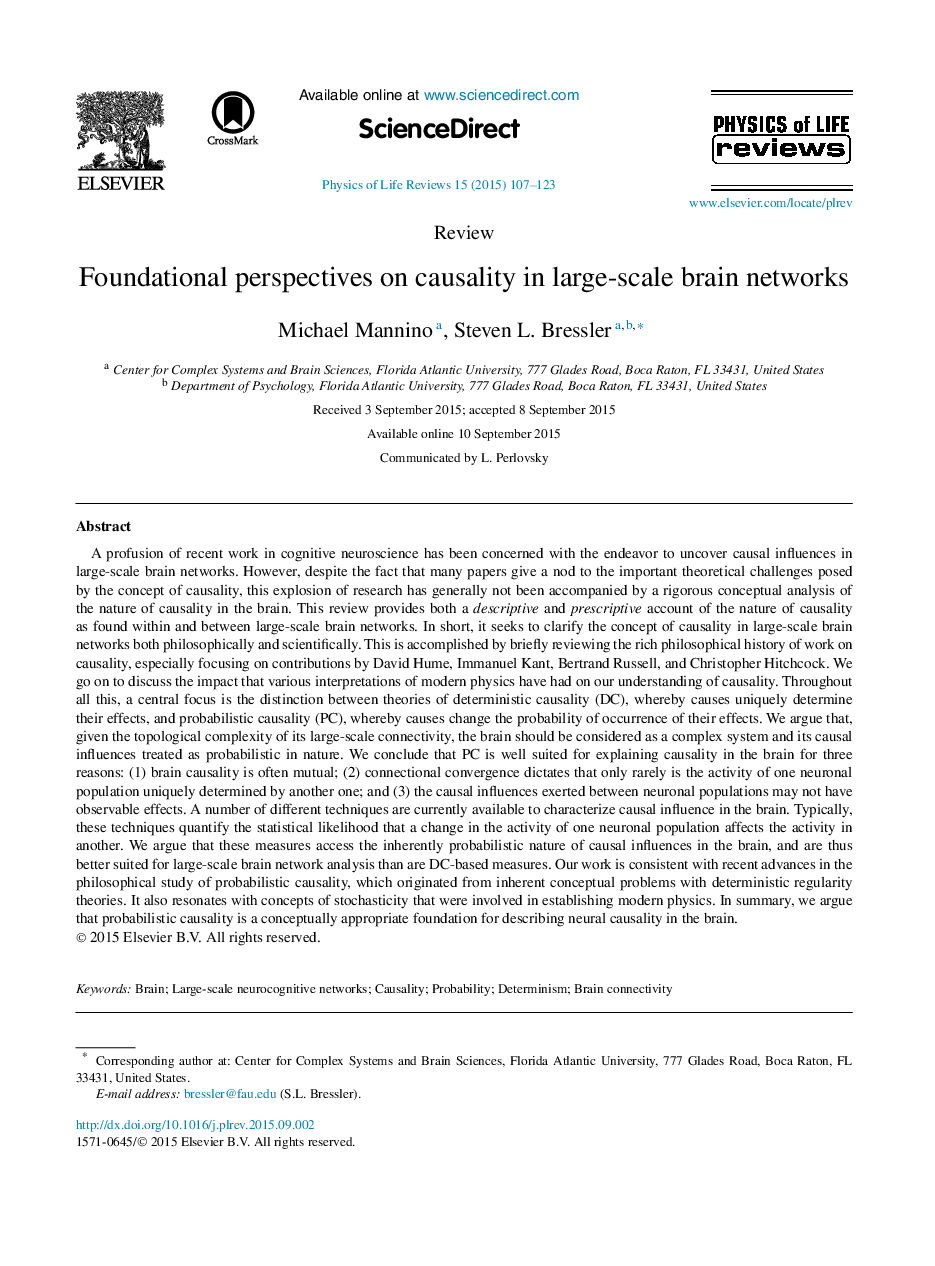| Article ID | Journal | Published Year | Pages | File Type |
|---|---|---|---|---|
| 1874182 | Physics of Life Reviews | 2015 | 17 Pages |
•An account of causality in large-scale brain networks is presented.•We clarify the concept of brain-network causality philosophically and scientifically.•A distinction is made between deterministic and probabilistic causality.
A profusion of recent work in cognitive neuroscience has been concerned with the endeavor to uncover causal influences in large-scale brain networks. However, despite the fact that many papers give a nod to the important theoretical challenges posed by the concept of causality, this explosion of research has generally not been accompanied by a rigorous conceptual analysis of the nature of causality in the brain. This review provides both a descriptive and prescriptive account of the nature of causality as found within and between large-scale brain networks. In short, it seeks to clarify the concept of causality in large-scale brain networks both philosophically and scientifically. This is accomplished by briefly reviewing the rich philosophical history of work on causality, especially focusing on contributions by David Hume, Immanuel Kant, Bertrand Russell, and Christopher Hitchcock. We go on to discuss the impact that various interpretations of modern physics have had on our understanding of causality. Throughout all this, a central focus is the distinction between theories of deterministic causality (DC), whereby causes uniquely determine their effects, and probabilistic causality (PC), whereby causes change the probability of occurrence of their effects. We argue that, given the topological complexity of its large-scale connectivity, the brain should be considered as a complex system and its causal influences treated as probabilistic in nature. We conclude that PC is well suited for explaining causality in the brain for three reasons: (1) brain causality is often mutual; (2) connectional convergence dictates that only rarely is the activity of one neuronal population uniquely determined by another one; and (3) the causal influences exerted between neuronal populations may not have observable effects. A number of different techniques are currently available to characterize causal influence in the brain. Typically, these techniques quantify the statistical likelihood that a change in the activity of one neuronal population affects the activity in another. We argue that these measures access the inherently probabilistic nature of causal influences in the brain, and are thus better suited for large-scale brain network analysis than are DC-based measures. Our work is consistent with recent advances in the philosophical study of probabilistic causality, which originated from inherent conceptual problems with deterministic regularity theories. It also resonates with concepts of stochasticity that were involved in establishing modern physics. In summary, we argue that probabilistic causality is a conceptually appropriate foundation for describing neural causality in the brain.
